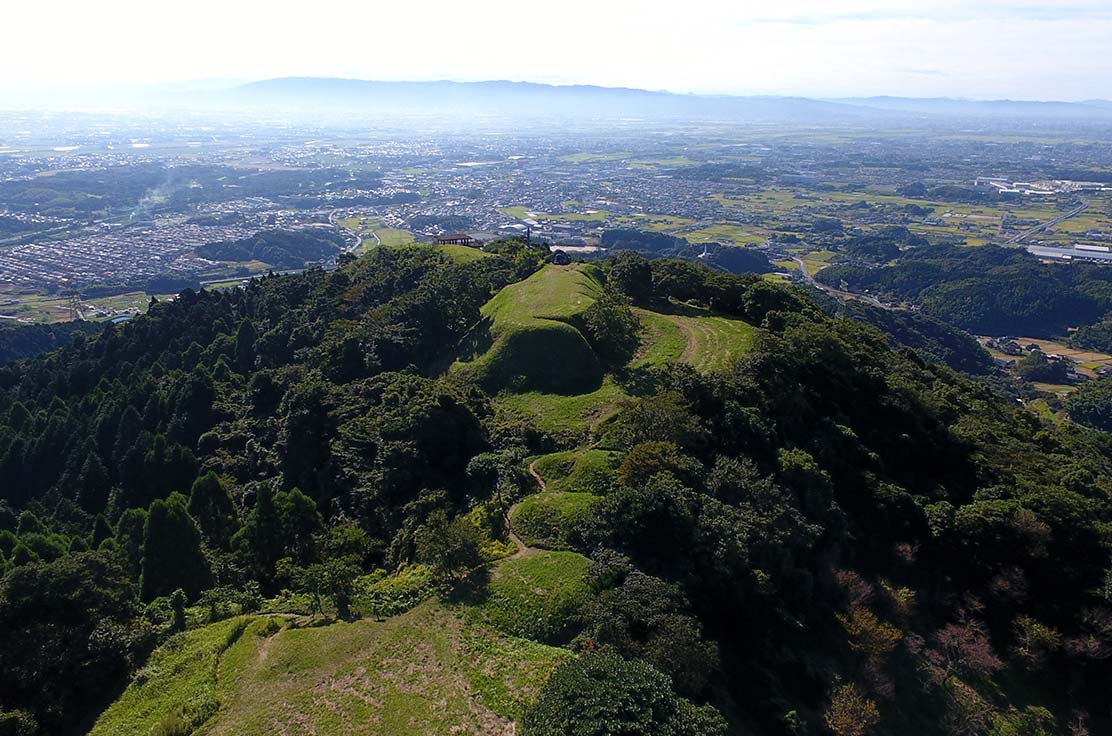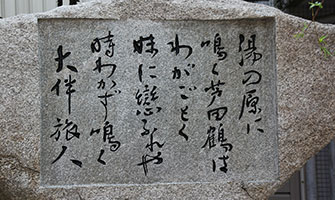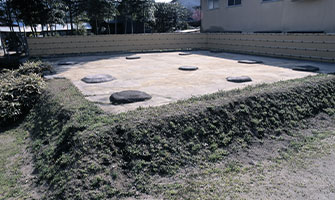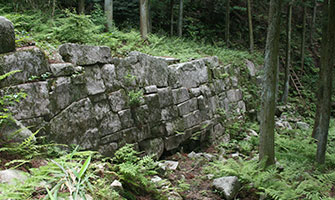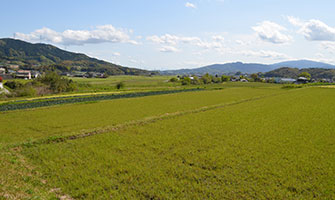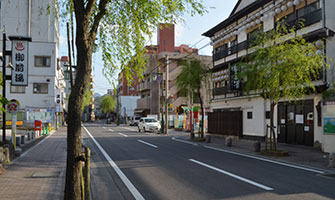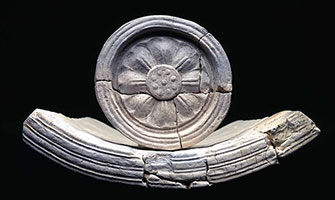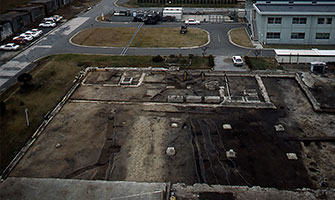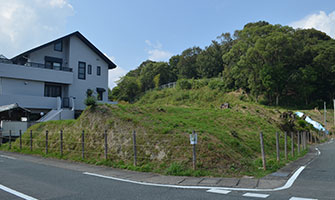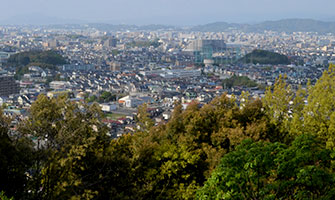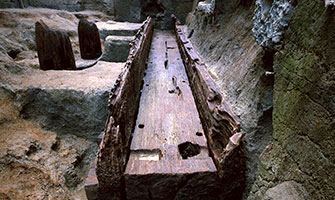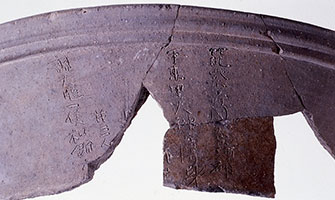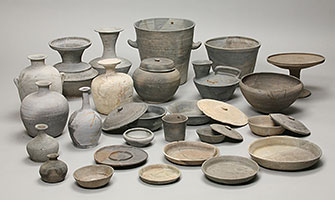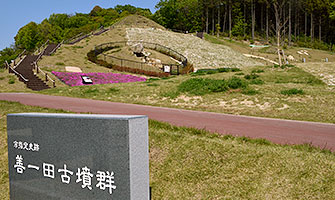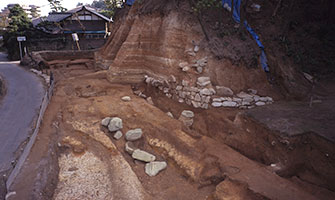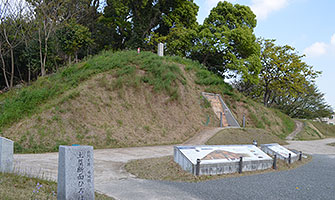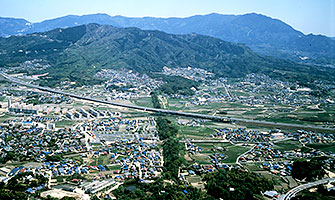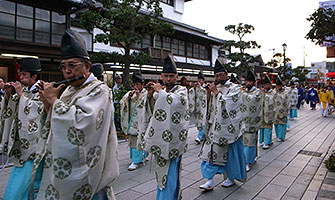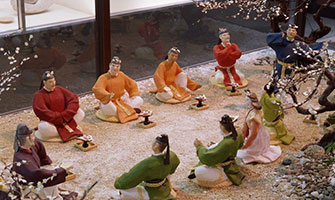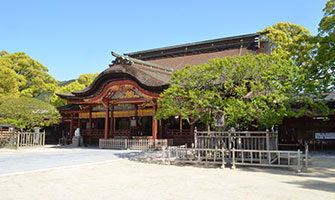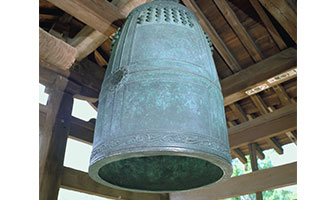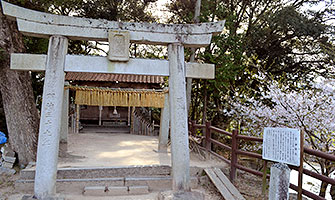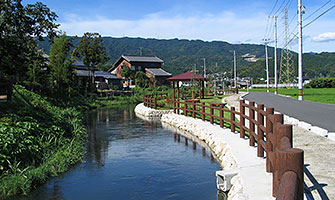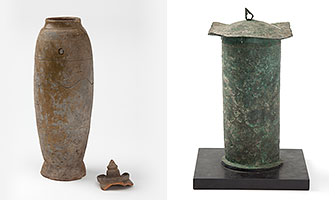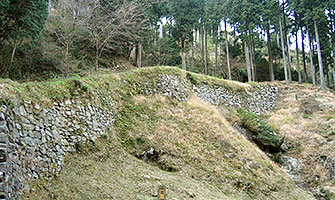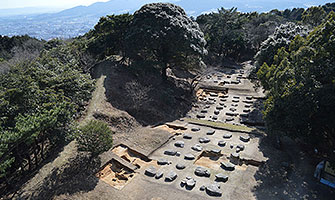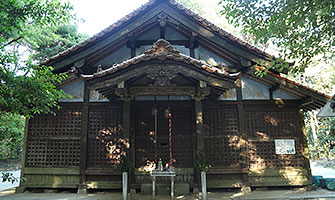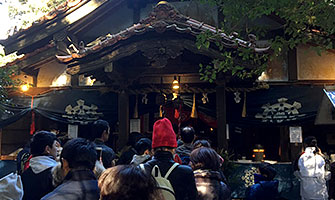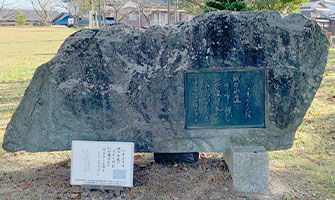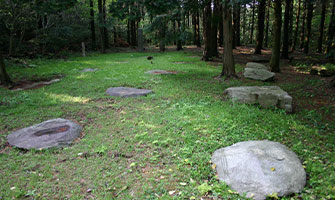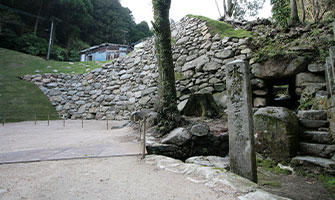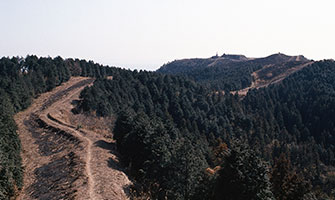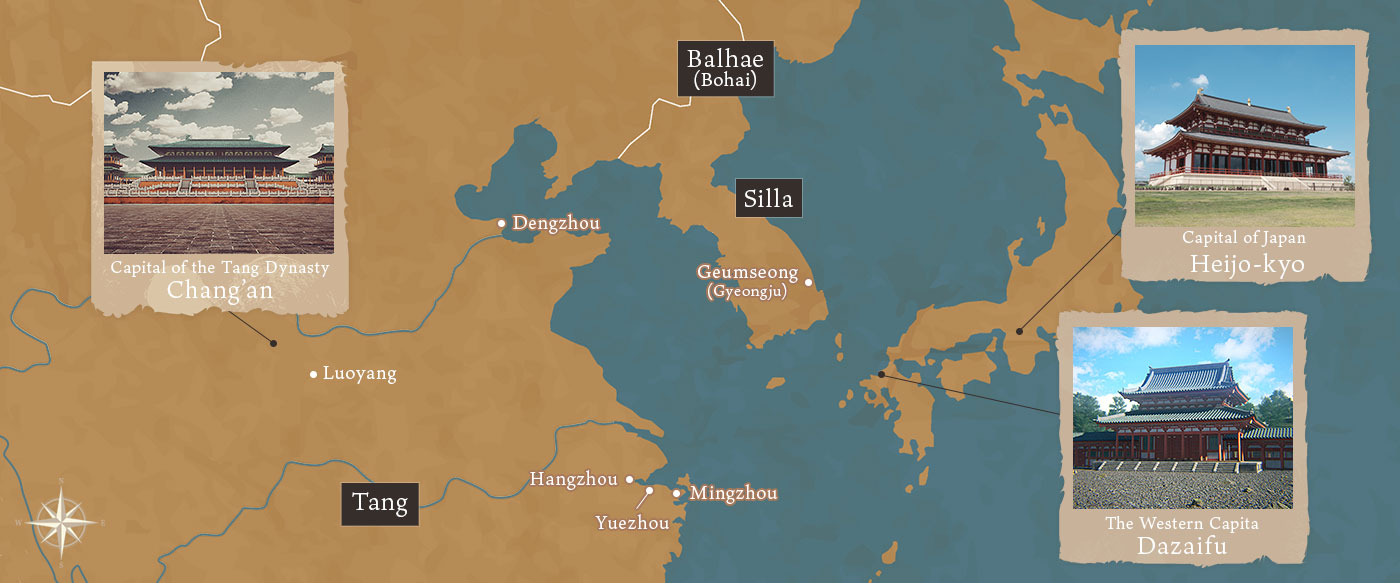
What is the Western Capital?
The "Western Capital" once flourished in the Chikushi region of Western Japan.
A grid-shaped town spanning two square kilometers was established in the center of fortresses built by the previous generation after the Battle of Baekgang such as Mizuki Fortress, Ono-jo Fortress, and Kii-jo Fortress, and grew into a full-fledged city on the level of other East Asian cities, complete with the Dazaifu Government Office, governmental districts and training schools for officials, imperial temples, state guesthouses, and more.
Foreign envoys visiting the “Western Capital” would travel south along the official road from Chikushi Hall (Koro Hall) on the shore of Hakata Bay, pass through the west gate of Mizuki Fortress, then presumably went north from Rajomon Gate along Suzaku Avenue to enter the state guest hall. They would then be dignified through a diplomatic ceremony, then head to the Dazaifu Government Office. At the government office, there would be music and banquets for ceremonial or entertainment purposes, where sumptuous food would be served on fine tableware from Japan, Tang China, and Silla.
The “Western Capital” drew many cultural and intellectual figures. With Chinese poetry recitals and “Plum Blossom Banquets” in which Japanese poems were performed while celebrating the plum blossom bloom at the mansion of the Chief of Dazaifu Prefecture Otomo no Tabito’s mansion, new culture was created here, and much of the poetry focused on the scenery of Chikushi, such as Ono-jo Fortress and Suita Hot Springs (Futsukaichi Hot Springs).
Advanced culture from continental Asia accumulated through this exchange; at Kanzeon-ji Temple, not only do statues influenced by urban and continental culture still exist, but ancient music used to entertain foreign envoys at banquets as well as the Buddhist temple bell where Sugawara no Michizane composed the Chinese poem “Fushutsumon”.
In this way, the "Western Capital" was a city of international exchange where advanced East Asian culture and Japanese culture traveled back and forth. Remains of this are spread throughout the Chikushi area. Traveling this land will bring you back to how things once were.
7 Fascinating Regions
The “Western Capital” is a city of international exchange that flourished in East Asia.
The cultural assets that speak to its magnificence are scattered across seven regions including
Chikushino, Kasuga, Onojo, Dazaifu, Nakagawa,
and Umi in Fukuoka Prefecture as well as the town of Kiyama in Saga Prefecture.
Experience the fascination of these seven areas for yourself!

- City of Chikushino
- City of Kasuga
- City of Onojo
- City of Dazaifu
- City of Nakagawa
- Town of Umi
- Town of Kiyama
Culture and Exchange Thriving in the Southern Outskirts City of Chikushino
Visible from Mount Tempai, where Sugawara no Michizane is said to have plead to the heavens for his innocence, are Mount Homan, where national rituals and prayers for safe voyage were made, as well as Ashikisan-jo Fortress along the official road leading to Buzen. At the foot of the mountains is Suita Hot Springs (Futsukaichi Hot Springs), which were mentioned in the Man'yoshu, and serve as a place of healing and exchange to this day. Situated nearby are the ruins of the abandoned Sugizuka Temple and Tonoharu Pagoda. The southern outskirts of the capital are teeming with the culture of this ancient city.
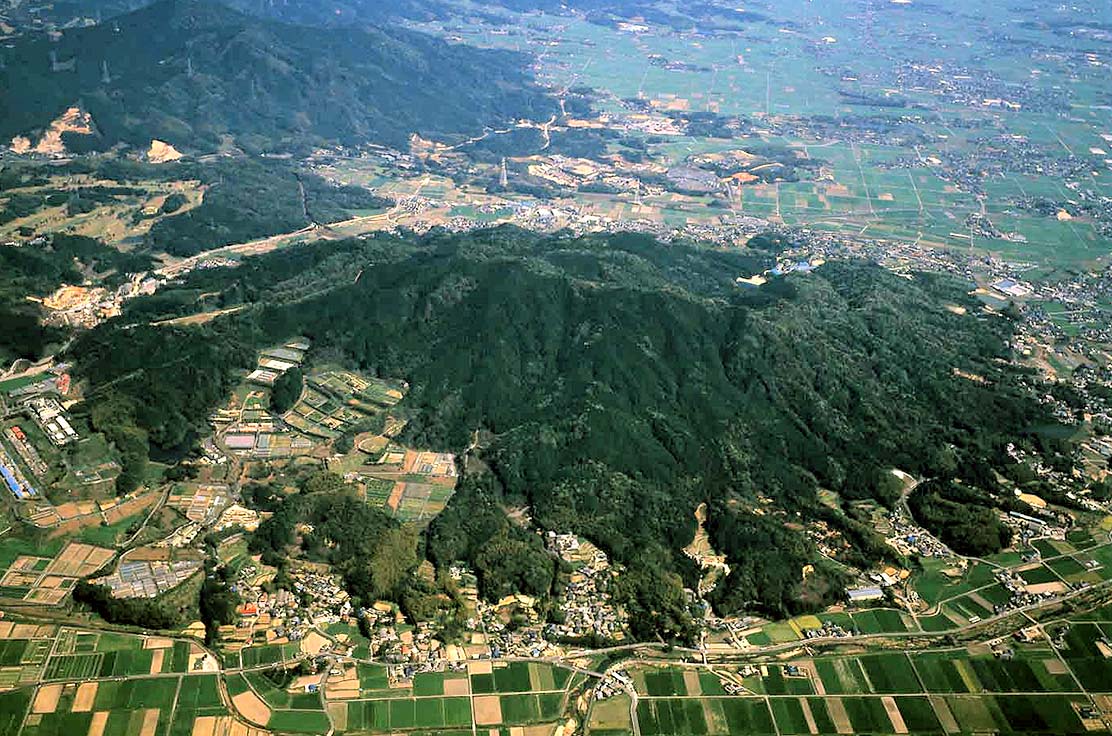
Constituent Cultural Properties the City of Chikushino
A Path of Exchange Leading to East Asia City of Kasuga
Roughly 2,000 years ago, the Fukuoka Plains were called the “Country of Na” and the area around Kasuga Hills, where royal tombs have been discovered, was brimming with foreign culture and technology. After the Battle of Baekgang in 663, fortresses large and small were built in the valleys between hills using civil engineering techniques from the Korean peninsula, and when the Western Capital was established, foreign envoys and merchants traveled along the official roads here. Traveling around the city lets you trace this history of international exchange.
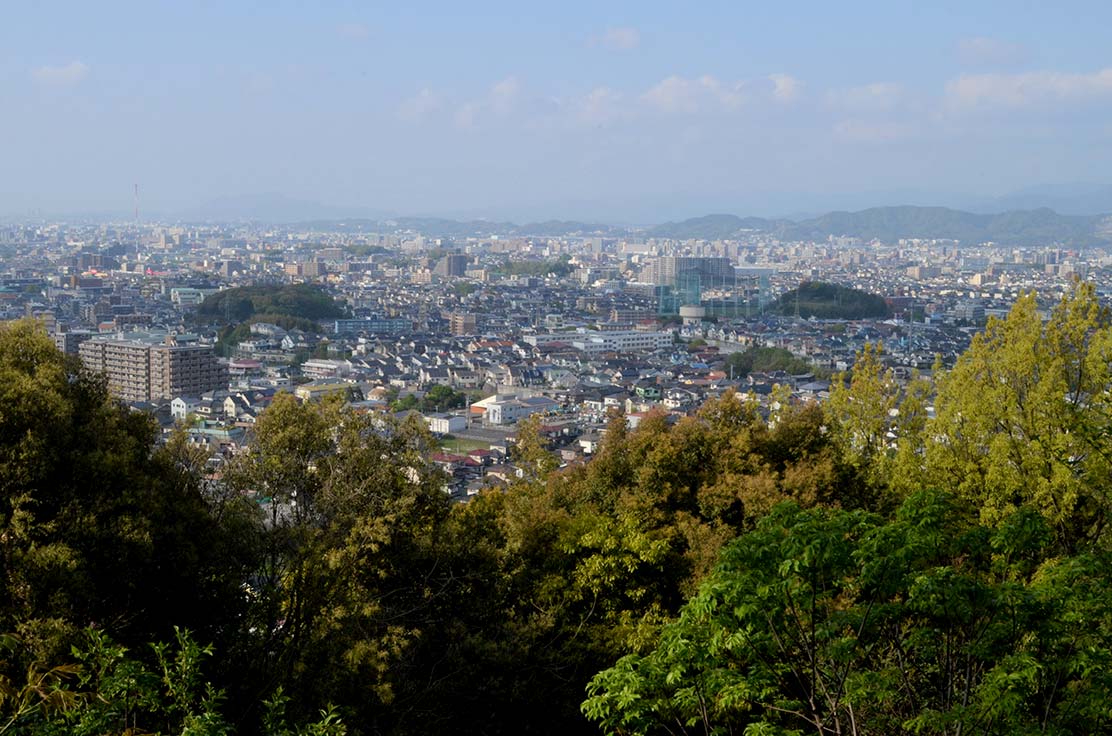
Constituent Cultural Properties the City of Kasuga
Ancient Techniques Protecting the Capital City of Onojo
Mizuki Fortress appears in the Nihon Shoki. Earthen fortifications built with advanced civil engineering techniques blocked off the plains and, together with Ono-jo Fortress, created a barricade to the “Western Capital”, where officials from the capital and foreign envoys were welcomed. Pottery for the “Western Capital” was produced in the Sue Kilns of the Ushikubi area using superior pottery techniques, and the Zenichida Burial Mounds are where ancestors who supported the diplomacy that made this possible are laid to rest. Stand in this land and you can see these ancient sceneries for yourself.
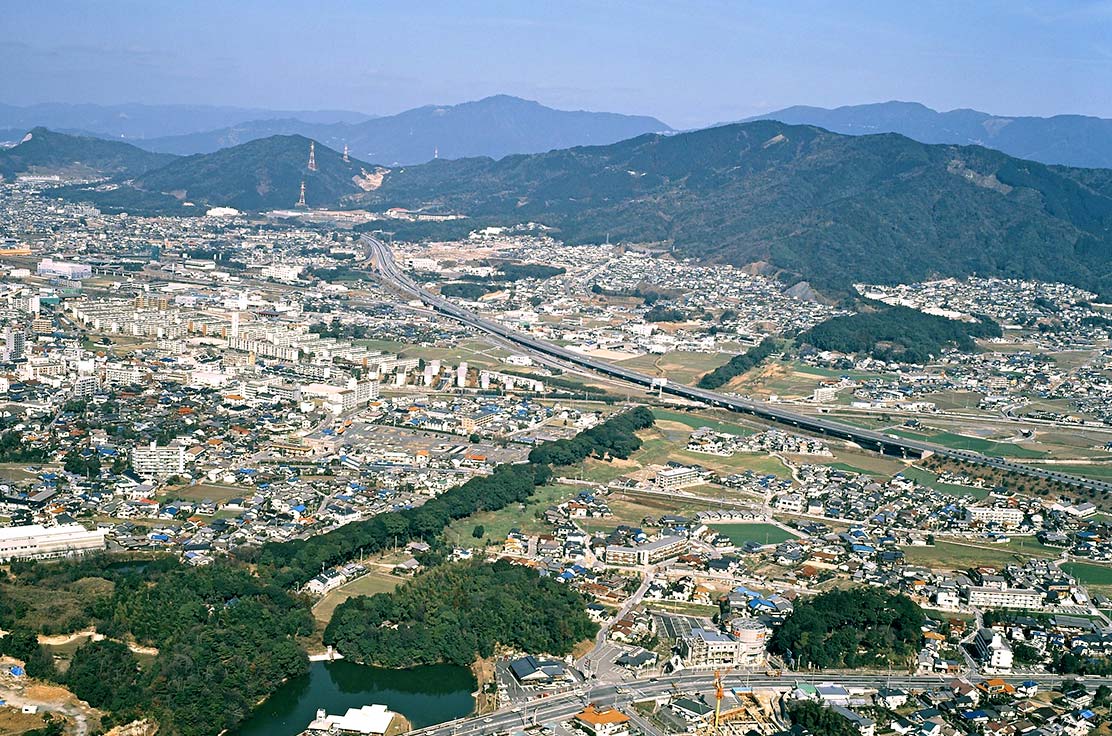
The Ancient Capital of Politics, Diplomacy, Defense, and Culture City of Dazaifu
The “Western Capital” was a hub of East Asian exchange. Protected by a fortress modeled after the capital of Baekje, the capital had a grid block, government offices, and guesthouses modeled after the capital of the Tang, decorated with delicately-patterned tiles. Foreign envoys and merchants brought advanced culture and artifacts, and intellectuals such as Otomo no Tabito and Sugawara no Michizane spread this new culture. This ancient city retains its heritage and fascinates many as an international tourist destination.
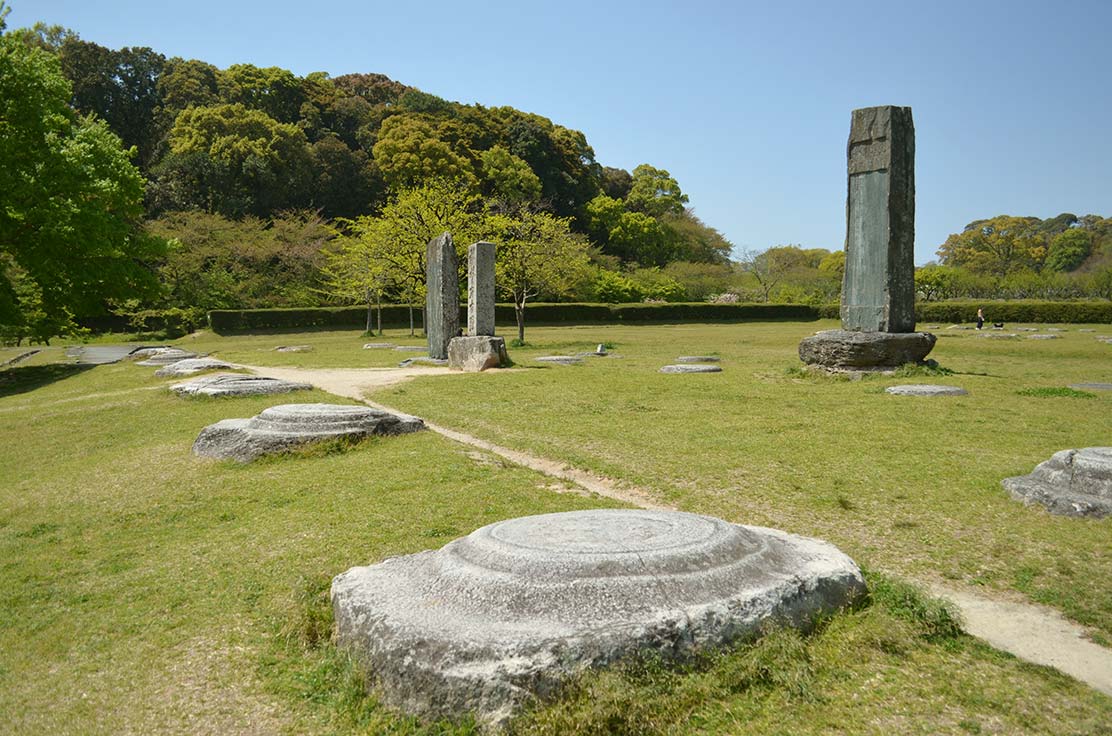
Constituent Cultural Properties the City of Dazaifu
- - Dazaifu Ruins
- - Ono-jo Fortress Ruins
- - Mizuki Fortress Ruins
- - Kanzeon-ji & Kaidai-in Temple
- - Chikuzen Kokubun-ji Temple Ruins
- - Dazaifu Academy Ruins
- - Kokubu Tile Kiln Ruins
- - Mount Homan
- - Temple Bell (Kanzeon-ji Temple)
- - Dazaifu Tenmangu Shrine
- - Dazaifu Tenmangu Shrine Ceremony transferring an object containing the spirit of a deity to another shrine
- - Traditional events at Dazaifu Tenmangu Shrine
- - Chikushi poetry circles in the Man'yoshu
- - Dazaifu Jobo (Grid-Based City) ruins
- - Official road
- - Corps seals excavation site (Mikasa corps seal, Oka corps seal)
- - Hannya-ji Temple Ruins
- - South Hall Ruins
- - Dazaifu Plum
- - Ushikubi Sue Ware Kiln Ruins
An Ancient Canal Watering Chikushi City of Nakagawa
Sakuta no Unade is a man-made waterway that brings water from Naka River gently down the plateau. Appearing in the Chronicle of Empress Jingu in the Nihon Shoki established in 720, this waterway has a long history. This trench running through the plains stretches a total of roughly 5.5 km, helping form a rich grain-producing region that supported the development of the “Western Capital”. Landscapes of water flowing quietly even now retain vestiges of the area’s past.
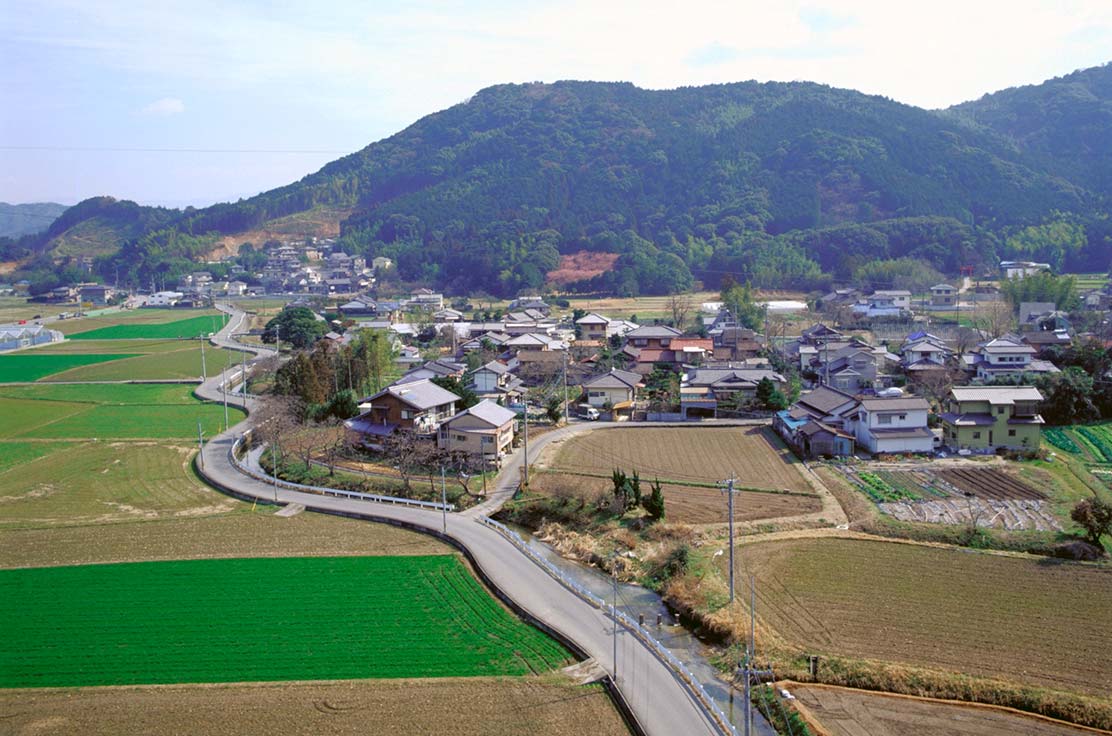
Constituent Cultural Properties the City of Nakagawa
A Cornerstone of Protection, a Mountain of Prayer Town of Umi
Mount Shioji was written of the in Man'yoshu. Ono-jo Fortress was built in 665 after the Battle of Baekgang as a cornerstone of a defense network, and later served as the northern defense of the "Western Capital". During the Nara Period, Shitenno-ji Temple was built for spiritual protection of the state, where prayers were offered to protect the nation. During the Heian period, numerous sutra mounds were built in the pursuit of salvation during the Latter Days of the Law. This stage of protection and prayer watches quietly over the people to this day.
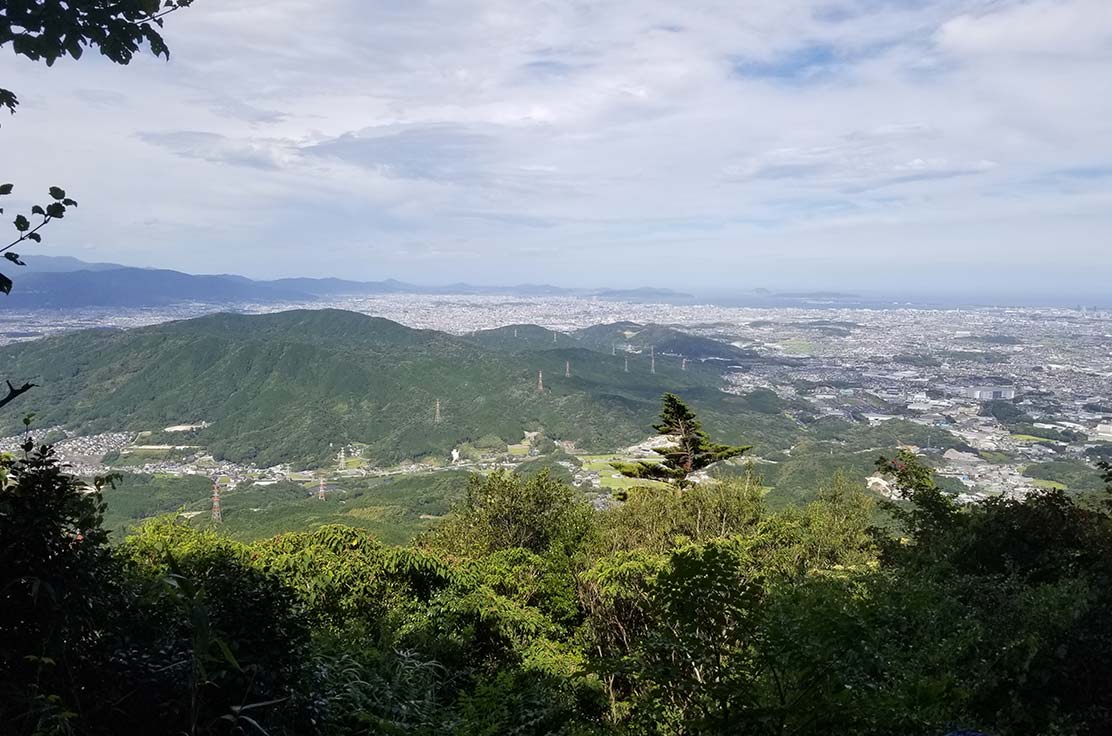
Constituent Cultural Properties the Town of Umi
Protection of the South and Tabito’s Gaze Town of Kiyama
Kii-jo Fortress was built together with Ono-jo Fortress in 665 and eventually became the southern defense of the “Western Capital”. Otomo no Tabito, whose wife died during his station as director of Dazaifu during the Nara period, went to the top of the fortress along with an official who was visiting to pay condolences. Looking out over the view from the fortress, he composed a mourning poem, and the lord of Chikugo Fujii no Onari composed a poem about the lonely mountain road Otomo no Tabito traveled when returning to Nara. Climb to the peak of the mountain and let your heart be swayed by the feelings of these people from the past.
